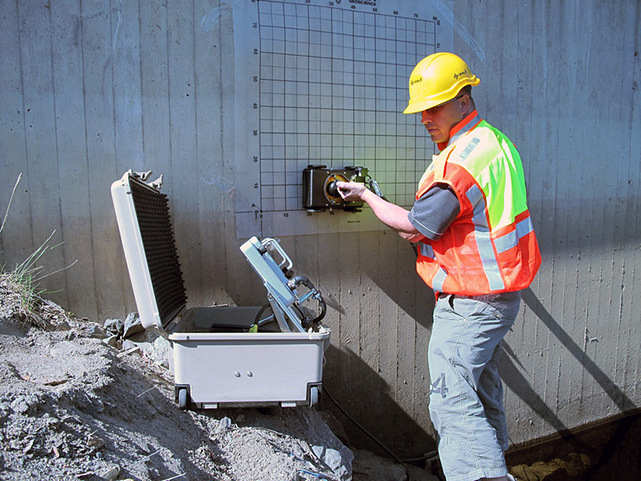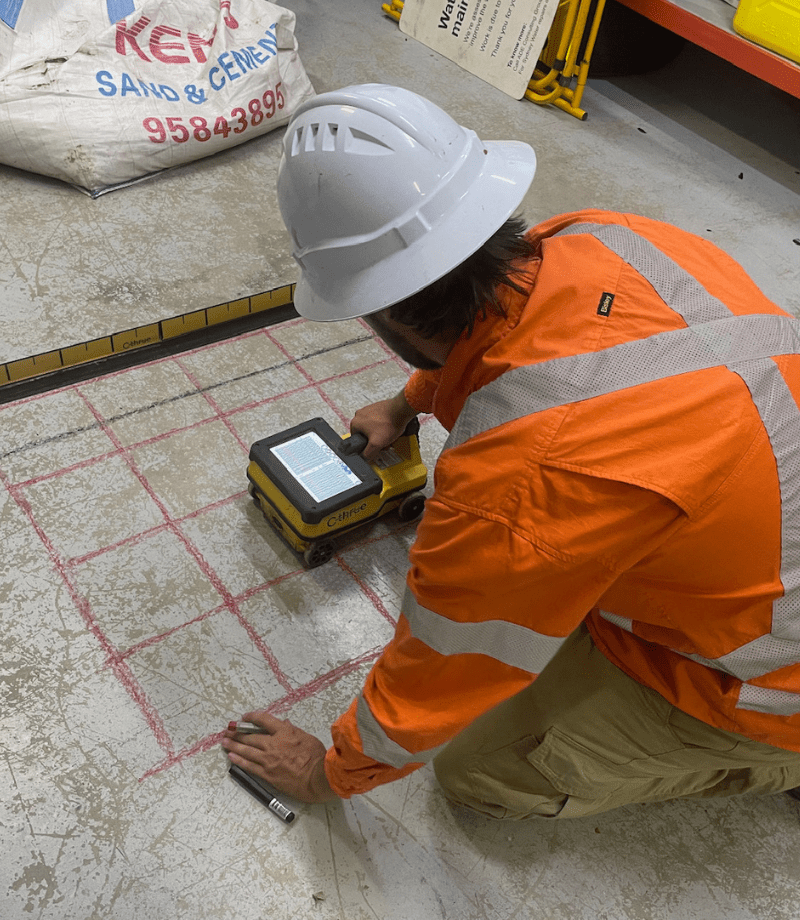Precision and Precision in Concrete Scanning Solutions
Reveal the Transformative Power of Concrete Scanning in Taking Full Advantage Of Efficiency and Safety
Concrete scanning has actually emerged as a crucial device in the building market, providing unequaled advantages in improving job efficiency and guaranteeing security requirements. The transformative power of concrete scanning lies in its capability to supply real-time information and in-depth understandings, changing just how tasks are planned and carried out.
Significance of Concrete Scanning
Guaranteeing the structural honesty and safety and security of building projects begins with the crucial action of carrying out complete concrete scanning. Concrete scanning is a non-destructive technique utilized to detect and map subsurface components within concrete frameworks. This procedure is necessary in determining potential risks, such as rebar, post-tension cords, and conduits, that may be concealed within the concrete. By making use of sophisticated modern technologies like ground-penetrating radar (GPR) and electromagnetic induction, construction teams can accurately situate these aspects without causing any damages to the framework.
The importance of concrete scanning can not be overemphasized, as it plays a vital role in preventing accidents, minimizing task hold-ups, and guaranteeing the long-lasting durability of the building and construction. By determining possible dangers before the building and construction stage begins, building contractors can execute proper safety and security steps and make notified choices regarding the style and implementation of the task. Additionally, concrete scanning helps in maximizing project timelines and budget plan by avoiding unanticipated costs and hold-ups that may emerge as a result of unpredicted blockages within the concrete. Inevitably, buying extensive concrete scanning is a proactive method that improves both performance and security in construction projects.
How Concrete Scanning Works
Concrete scanning runs as an important device in building and construction tasks by employing sophisticated innovations to identify and map subsurface components without creating structural damages. Ground Passing Through Radar (GPR) and Electromagnetic Induction (EMI) are two main approaches used in concrete scanning. GPR jobs by emitting high-frequency radar pulses right into the surface area, which recover when they experience subsurface things or spaces. The moment taken for the signal to return suggests the depth and place of the objects. EMI, on the other hand, makes use of magnetic fields to identify differences in material compositions, such as identifying rebar or conduits within concrete structures.
Throughout the scanning procedure, the information accumulated is examined in real-time, allowing immediate identification of possible hazards or challenges underneath the surface area. By utilizing these sophisticated modern technologies, concrete scanning dramatically decreases the danger of expensive problems and injuries on building and construction sites.
Benefits of Concrete Scanning
Using innovative scanning technologies in building projects uses a wide variety of advantages, enhancing both efficiency and safety and security on-site. One of the main benefits of concrete scanning is the capacity to detect and find embedded things such as rebar, post-tension cords, and avenues accurately. By recognizing these elements before exploration or cutting into concrete frameworks, the danger of accidental strikes is considerably decreased, avoiding potential injuries to employees and damage to the structure itself. learn this here now Additionally, concrete scanning aids in preparation and making better, as it offers exact details concerning anonymous the area and deepness of structural components.

Study: Concrete Scanning Success

In one more case, a building company made use of 3D concrete scanning to analyze the problem of aging concrete frameworks in a historical structure. The thorough scans offered valuable understandings right into the degree of degeneration and aided prioritize maintenance initiatives effectively. By proactively dealing with locations of issue identified through scanning, the firm was able to expand the life-span of the structure and make sure passenger security.
These instance researches underscore the transformative power of concrete scanning in enhancing efficiency, precision, and security in building and construction tasks.
Implementing Concrete Scanning in Projects
Executing sophisticated scanning innovations throughout building and construction tasks has become progressively crucial for improving accuracy and safety. By integrating concrete scanning right into project planning and execution, building teams can identify prospective hazards, such as rebar or post-tension cables, concealed within concrete frameworks. This positive technique minimizes the threat of crashes, delays, and pricey rework, inevitably leading to more efficient project timelines and budgets.
To implement concrete scanning efficiently, job managers must work together closely with seasoned scanning professionals to establish the most ideal scanning strategies for the certain project needs. Involving scanning professionals from the onset of a job enables the group to produce extensive scanning strategies that attend to crucial areas of concern and make certain comprehensive data collection.
In addition, including concrete scanning into regular project operations can simplify decision-making processes, as real-time scan information supplies prompt understandings right into the problem of concrete structures - Concrete Scanning. This data-driven approach facilitates educated problem-solving and allows groups to make adjustments immediately, fostering a society of efficiency and safety and security throughout the job lifecycle

Conclusion
Finally, concrete scanning plays an important duty in enhancing effectiveness and safety and security in construction jobs. By making use of advanced innovation to identify and map out underlying frameworks within concrete, this process aids to avoid expensive errors, make certain structural stability, and decrease dangers on site. blog here With the capability to reveal surprise elements and give precise data, concrete scanning proves to be a beneficial device for maximizing project results and maximizing total success.
Concrete scanning is a non-destructive technique used to identify and map subsurface elements within concrete structures. Additionally, concrete scanning helps in enhancing job timelines and budget plan by avoiding unexpected costs and delays that might arise due to unexpected obstructions within the concrete. One notable case research entails a large improvement task where concrete scanning played an essential role in guaranteeing job success.In an additional instance, a construction business used 3D concrete scanning to evaluate the condition of aging concrete structures in a historic building. By integrating concrete scanning into project planning and execution, building teams can recognize potential threats, such as rebar or post-tension cable televisions, hidden within concrete structures.